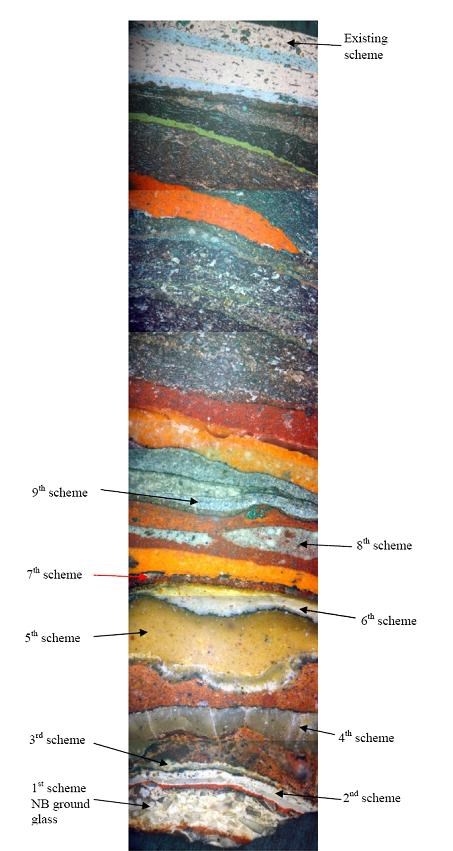Friday 27 May 2011
50,000 NEW BOLTS AS GOOD AS BRUNEL’S GOLD
- Region & Route:
- | Wales & Western: Western
- | Wales & Western
Around 50,000 new bolts will be used in Network Rail’s major scheme, which is starting today, to restore Royal Albert bridge. These bolts – as precious and mighty as Brunel’s legendary golden rivet bolt - will be vital to keep the landmark structure strong for the next century and beyond.
The £10m improvement scheme will see engineers investing nearly 2m hours of work over the next two years to strengthen and repaint Royal Albert bridge, bringing it back to its former glory.
Around 35,000 litres of special paint will also be used to spruce up and protect the bridge’s steel façade from corrosion.
Mark Langman, route director for Network Rail said: “We have a big task in transforming the railway on Great Western over the coming years and this improvement to the Royal Albert bridge plays a big part in that.
“The Royal Albert bridge is a vital rail link, carrying more than 1 billion tonnes of rail traffic since it was built. This is the most complex refurbishment work to the bridge in history, injecting a new lease of life and safeguarding this landmark for many more years to come.”
To be carried out in five stages, the work will start concurrently from each end of the bridge and it is carefully designed to minimise disruption to the community and passengers. The scaffolding will be encapsulated to create a contained safe working environment to prevent dust and debris from falling from the structure and to reduce any noise pollution.
The encapsulation is sealed with Rockwool to help reduce any noise and its roof is also pitched to prevent accumulation of rain water, which could add weight to the structure. In addition, the encapsulation will form a tunnel around the track, so that engineers can continue to access the structure when trains are running.
A large industrial vacuum cleaner will be used to remove all waste, including grit produced during the blasting process. This waste will be removed daily to prevent any contamination to the environment.
The structure was listed Grade 1 in 1952 by the English Heritage, which has also backed the improvement scheme.
Notes to editors
Fast facts:
- Over 100 tonnes of new steelwork
- 40 diagonal bracings will be strengthened
- 132 load bearing cross girders will be repaired
- 205 original Brunel cross girders will be repaired
- 12 coats of old paint, dating to 1859, will be removed
- 4 coats of new paint will be applied
- 1,000 tonnes of grit blast abrasive will be extracted
- 1,800 individual steelwork repairs
The effort to improve the bridge has also helped trace the bridge’s original colour of pale stone (off-white) that it was painted in 1859, replacing the missing piece that completes the jigsaw of Royal Albert bridge’s colourful history. Two 1m square patches of the existing paint layers on the bridge will be preserved for posterity.
The discovery was made from an unprecedented paint analysis commissioned by Network Rail. It is to help Network Rail’s engineers understand the bridge’s existing complex paint system and define an effective approach to repaint the structure’s two main spans.
The Royal Albert bridge has been painted over on 20 occasions since it was completed in 1859. However, its parapets and main spans were repainted in red-brown for £1,700 in less than a decade.
In 1868, the ‘I K Brunel Engineer 1859’ lettering on the portals of the two main spans were painted at a mere cost of £2.31.
Contact information
Passengers / community members
Network Rail national helpline
03457 11 41 41
Latest travel advice
Please visit National Rail Enquiries
Journalists
Network Rail press office -Western route
MediaRelationsWestern@networkrail.co.uk
About Network Rail
We own, operate and develop Britain's railway infrastructure; that's 20,000 miles of track, 30,000 bridges, tunnels and viaducts and the thousands of signals, level crossings and stations. We run 20 of the UK's largest stations while all the others, over 2,500, are run by the country's train operating companies.
Usually, there are almost five million journeys made in the UK and over 600 freight trains run on the network. People depend on Britain's railway for their daily commute, to visit friends and loved ones and to get them home safe every day. Our role is to deliver a safe and reliable railway, so we carefully manage and deliver thousands of projects every year that form part of the multi-billion pound Railway Upgrade Plan, to grow and expand the nation's railway network to respond to the tremendous growth and demand the railway has experienced - a doubling of passenger journeys over the past 20 years.
Follow us on Twitter: @networkrail
Visit our online newsroom: www.networkrailmediacentre.co.uk

